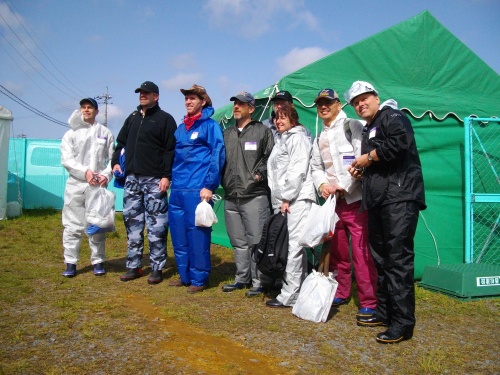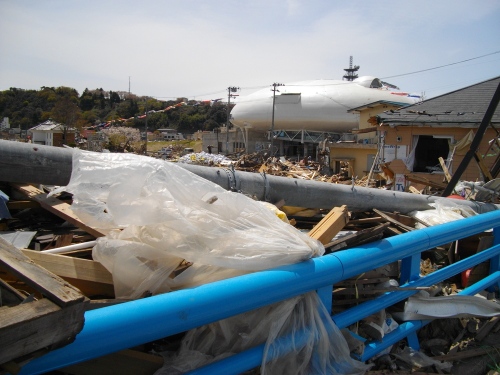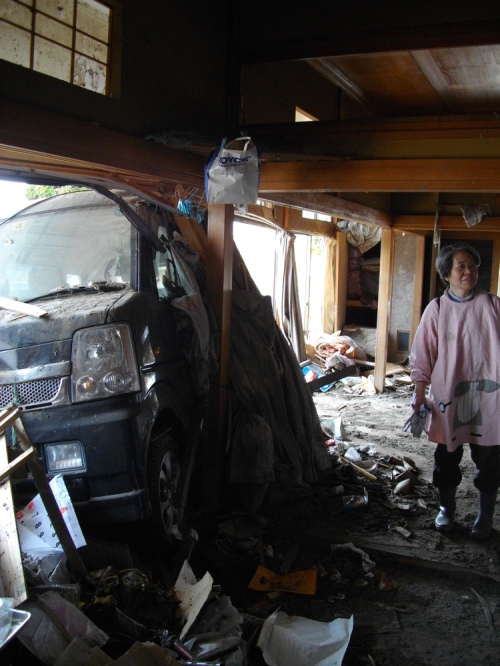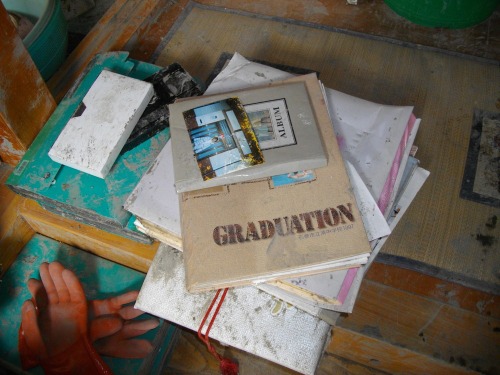Archive
Why Sitting is Killing Us
I know this is true. I do as much as I can to avoid work that forces me to sit. But it is so difficult! Most “business” demands that “real” work is done sitting down. Usually in front of a monitor. At a desk.
I can’t really imagine why this must be so. Why is it the document and not the ideas contained that is the “product” that justifies payment? When and how did this happen? Why did this happen? is it too late to change the way we charge for our work? Life – or should I say death – shouldn’t have to be this way. We should be paid for the work we do that enhances life, sustainable wellness, and quality of life. The pay doesn’t even have to be in currencies. As long as we are rewarded with quality of life, in goodwill, and in a wealth of praise and consideration from others for our efforts, then I would be happy to trade money for this kind of happiness and wealth. I’d be a RICH man! I’d love to be “paid” for the physical work I do in the service of others, as well as for the good ideas that give people the will and sense of joy, motivation, and dedicated effort. I could certainly do much of this standing up, moving around, walking about, and running a lot. I love computers and telecommunications, but I could do without the monitor and especially, the keyboard. I have high hopes for a future in which I could work more effectively and healthily. Anyone want to join me for a stroll into a brighter future? <br />Via: Medical Billing And Coding
<br />Via: Medical Billing And Coding
More on the Quake, Recovery, and the Potential of Gossip
Postcard from Japan: Disability and Disaster
http://www.beaconbroadside.com/broadside/2011/03/postcard-from-japan-disability-and-disaster.html Suzanne lives in Tokushima Prefecture, with her husband and 2 children. One of her children is 11 years old, around the same age as my son, Stevie, who is 10 and in the 5th grade. You can read her post at the link above. I recommend that you do. It shed’s a strong light on the particular difficulties experienced by people with disabilities in Japan and during disasters. My post here, though, is with regard to a brief passage in Suzanne’s essay.
This phrase, “shikata ga nai“, is one I heard quite often as a child, mostly by Issei generation grandparents speaking about their experience in the Relocation Camps during World War II. In hearing this phrase repeated again in Tohoku, I was reminded of my childhood. Upon my return to Tokyo and reading Suzanne’s essay, I find that I agree completely that this phrase is very interlinked with the Japanese aversion to meiwaku.
In Tohoku, 2 months after the quake and tsunami, most evacuation centers, temporary housing, and other areas damaged by the events of March 11 have sufficient food, water, and most things. I heard repeatedly that people have the things they need, that the issues are no longer survival but revival of work, industry, and livelihood. But this, while true, is somewhat misleading. The quality of life is indeed still tenuous. Most people do have sufficient food and water is available. But running water is still unavailable in many places and anpan for breakfast and onigiri for lunch every day may be sufficient in quantity but not quality. I found it quite interesting that while it was very difficult for Japanese volunteers to ask personal questions of survivors and to get straight and honest answers, the American volunteers that I went to Tohoku with were not only able to ask but to receive quite detailed answers without being burdened by cultural codes of reservation and trouble avoidance. I was able to elicit a glimpse of “real” stories from a few children and elderly people we met. But I think that emotional recovery and healing will begin only when people are able to overcome their sense of fatalism and that opening up to others is a burden. While most people are completely convinced that physical recovery is not possible without intervention, emotional recovery will require as much. I think that the time has already arrived for the region to be visited by groups of people who are able to participate outside of the cultural norms. Foreigners and children are perfect in this regard, of course. But so too are beauticians, barbers, and masseuse. The hair stylist is notorious for his/her ability to bring out the gossip in each customer. In times like these, gossip may be a critical component to heal the wounded.Volunteer Activities in Ishinomaki (Miyagi Prefecture) with BSA Leaders during Golden Week
Most of this post in Japanese as I used it in a report to my Scouting Association of Japan troop.
I visted the Ishinomaki area with a group of BSA leaders during Golden Week, from May 1-4. We participated in volunteer work activities in the SAJ volunteer center. This report summarizes our activities.
It was hard, backbreaking work. But, despite the many difficulties – getting there, the hard labor, witnessing the devastation, the horrible smell, and so much more – the smiles that we saw on the faces of those we helped made each day’s work well worth the effort. We’ll be back again. And again.
宮城県石巻ボランティア活動報告書
杉並6団
VS副長
加藤マイケル孝仁
目的 日本におけるBSAの東北大震災支援活動とボーイスカウト日本連盟との連携をはかる
長期的スカウト活動を行うための下見
現地でのネットワークを作るための活動
ボランティア活動を行う
内容 5月1日
12:45 広尾駅周辺末日聖徒イエス・キリスト教会集合
13:30 合計8名、車2台で出発
19:30 石巻市、ボーイスカウト日本連盟のボランティアセンター本部の石巻球場へ到着
20:00 テント設営
20:45 夜の全体会議に参加、翌日の活動グループ分け、内容を確認
21:30 夕食
23:00 休み
06:00 起きる
06:20 個別で朝食
07:30 本部テントでおにぎり作り
08:30 全員集合
09:00 ボランティア活動へ出発(3班)
3班は合計8名(SAJ5名、BSA3名)
09:30 活動住宅へ到着
家の中の作業は前日にほぼ終了していたため、主な活動内容は家の玄関前、
外の瓦礫や泥の撤去であった。
大きい瓦礫は運んで撤去。
その他はゴミ袋につめて撤去。
午後14:00ごろの満潮時までに撤去を目標としました。
12:45 撤去作業を無事に終了
13:00 石巻海岸沿いなどの被害を一部見学
13:30 SAJ本部到着
道具の掃除
14:00 昼食
16:00 1・2班の戻りを待ち、他のスカウトボランティアと交流
18:00 夕食
他のBSAの集団は温泉と夕食へ出かけました。
私はSAJのボランティアとの交流、翌日の班分け、打ち合せを優先し、本部へ残った。
20:00 全体会議に参加
22:00 解散
BSAのリーダーとテント前で翌日の活動内容を報告。
BSAの新たな戦力が加わり(5名)、挨拶と仕事内容の説明を行いました。
22:30 休み
06:00 起きる
06:20 個別で朝食
07:30 本部テントでおにぎり作り
08:30 全員集合
新たなBSAスタッフを紹介し、3名は1班に加わった。
09:00 ボランティア活動へ出発(4班)
4班は合計4名(SAJ5名、BSA3名)
09:30 活動場所へ到着
最初に到着した家は経営するかまぼこ工場が隣であった。
家主は仙台で避難生活をしていたため、家の下見はほとんどできていなかった状況。
家は「全壊」認定されていた。
主な活動内容は内部の瓦礫撤去として予定していたが、現地到着の判断では危険性が高く、
家の正面口、なくなっていた壁際のタンスなどの瓦礫だけの撤去を行いました。
その間SAJ本部と連絡を取り合い、次の活動箇所を紹介した。
10:30 2番目の活動場所へ到着
この家も「全壊」認定されていた。
当家には別の家のタンス、たたみなどの瓦礫が流れ込み、残っているもの把握もできず、
災厄な状況でした。
25歳くらいの娘意外の家族は行方不明であった。
家の中心部に乗用車も突っ込み、屋根の一部を支えていた。
余震の恐れの覚悟をふまえ、主な撤去活動を行いました。
タンス、ピアノ、畳や流れ込んだ泥などをスコップやネコを使用して撤去。
11:30 本部からの連絡を受け、2班の家へ合流した活動支援を指示されました。
11:45 3番目の活動場所へ到着
昼食
12:30 仕事開始
主な内容は街区の溝(どぶ)のどろの撤去作業。
水浸しの断熱材の取り出し。
家の前庭にあるガラスや釘を含んだ砂の撤去。
これらの仕事は大変な重労働であったため、最終的には1班も合流し、2:30ごろに推測されていた
満潮時までに仕事を終えることを目標としました。
16:00 終了
16:20 本部へ到着
16:30 道具掃除
当初の温泉と食事へ行くことを雨天によって変更、キャンプの撤去作業を決断。
18:00 5名の1グループとそのまま東京へ出発。
0:30 広尾駅周辺末日聖徒イエス・キリスト教会到着
1:30 甲州街道、明大前周辺まで送っていただき
タクシーで家まで。
1:50 家へ到着 感想 主な仕事は重労働。
撤去活動を行っても瓦礫の置き場所の確保ができず、どうしようもない状況である。
避難所は直接拝見することはできなかったが、年配の方や子供が目立つ。
支援部室は大部分届いていましたが、その内容の「質」の問題が多い。
同じような食べ物を毎日食べていることが多く、いろんな意味で疲れがたまり始めている。
子供たちは学校に行けないことも多く、日中は避難所周辺で遊ぶことしかできない。
「甘いもの」、「熱い食べ物」、「冷たいもの」などと変化のあるものが欲しいと聞く。
マッサージ、美容師、エンターテインメントなどの要望に必要性が高まっている。
道具や活動服装などの準備は必要。
主な仕事内容は高校生(14歳以上)であればできることが多い。
しかし、ワークボランティアの活動よりは子供たちや年配の方に対する「心のケア」、
一緒に遊んだり、話を聞いたり、食事を作ったりなどの「普通な生活の一歩に近づく」活動が
最も重要な時期になっている。









